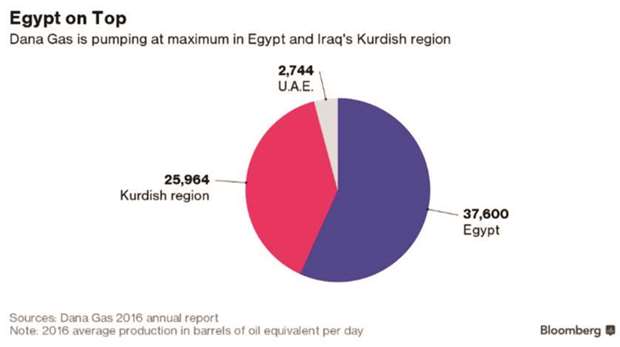Champions of the rapidly expanding $2tn Islamic finance market are probably hoping the Dana Gas situation will go away, and they may yet get their wish.
The Middle Eastern energy explorer sent shockwaves through the Shariah industry this month when, as part of its battle to restructure debt, it declared the bonds it issued were no longer legal under Islamic law. Now Dana Gas has postponed a call with holders of the securities at which it was expected to explain why the $700mn notes are void and why creditors should let it reschedule the debt on fresh terms. In cancelling the event, the company cited a Bloomberg article which it described as “misleading.”
But the debt discussions are only one part of the story. These charts show how Dana Gas ended up where it is – and why it could still turn things around.
Dana Gas isn’t the only explorer suffering as Brent crude prices languish at about $45 per barrel, but its situation is more urgent than most. The company’s securities mature in October and it has said it won’t make payments due in July either.
Dana Gas produces most of its fuel in Egypt and the semi-autonomous Kurdish region of northern Iraq. But both governments are behind on their bills, handing Dana Gas a cash-flow headache. Even after Egypt made $135mn in payments this year, the money it needs to pay bondholders is still outstanding.
So far, so straightforward. But Dana Gas is pursuing the cash it is owed. First, in an arbitration case with Iran’s state oil producer over a supply deal gone wrong. That court has already found in favour of Dana Gas and its partners and is evaluating damages.
And in a second set of proceedings, an arbitration court is considering claims against the Kurdish administration of more than $26bn, according to the company. Dana Gas and partners have already been awarded about $2bn in damages so far. That money alone could more than cover its
liabilities.

.


